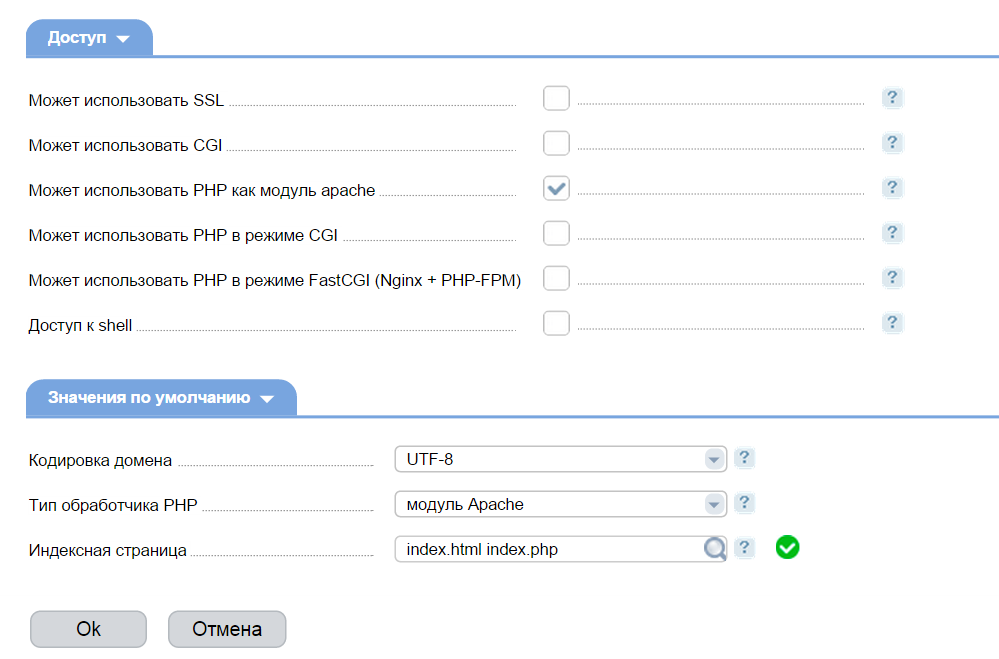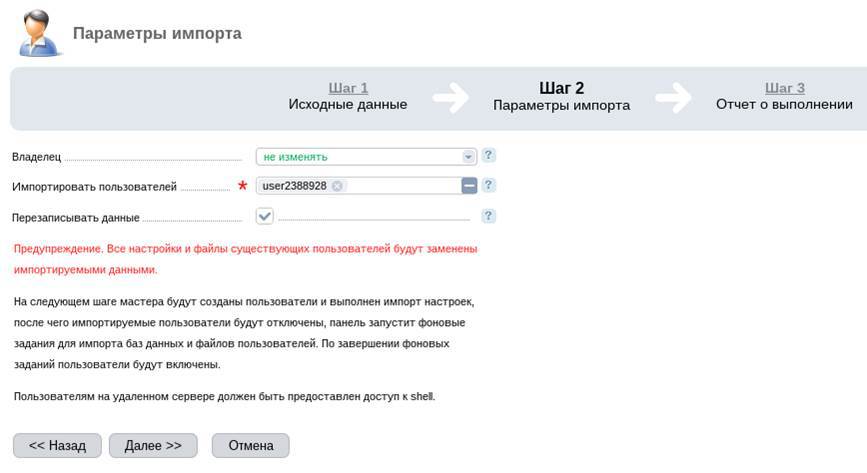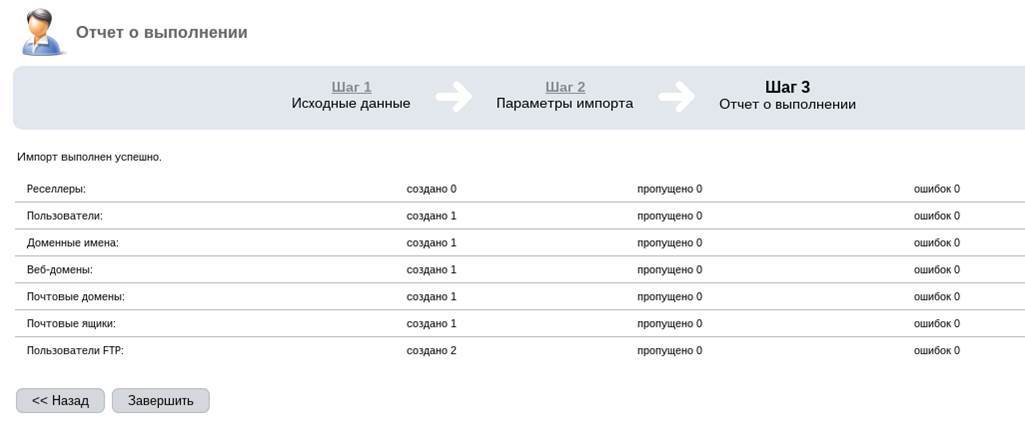Scale your hosting on a new level with ISPmanager 5 Business
ISPmanager 5 Lite replaced the 4th control panel at the end of 2013 and, from this moment on, everyone was strongly interested in the progress of work on creating ISPmanager 5 Business.
When developing an expanded version of ISPmanager 5, the task was to develop a new approach to creating virtual hosting.
What's the Difference?
If we compare ISPmanager Lite and ISPmanager Pro 4 generations, then their differences are as follows. The Pro version provides additional functionality for working with resellers, it is possible to create flexible tariff plans with access restrictions and system resources, as well as the ability to connect to one control panel of others, for centralized management of all servers.
When creating the 5th generation of the virtual hosting control panel, it was decided not to dwell on the functionality that simplifies setting up and administering the servers and clients on the virtual hosting. The new version has the ability to scale the entire system. It became possible to connect additional servers and assign specific roles to them: a database server, a mail server, a DNS server, and a server for hosting the sites themselves. ISPmanager 5 Business as well as ISPmanager 4 Pro takes advantage of the previously tested CloudLinux distribution for more flexible resource limits for users.
')
Installation process
Recommended and tested distributions for working with ISPmanager Linux operating system are Centos 6.x and Debian 7.x. As in earlier versions, ISPmanager 5 Business is recommended to install on a server with a new installation of the distribution kit in the minimum configuration, in order to eliminate any possible software conflicts. In this case, all the software required for the operation of the virtual hosting will be installed from the repositories of the selected distribution and configured accordingly.
In this article we will give an example of installing ISPmanager 5 on CentOS 6.5.
The initial installer has not changed and still it is a shell script that can be downloaded from the official ISPsystem site.
This is a common installer for the entire fifth product line of the ISPsystem company, so we indicate what specifically to install using the parameters:
During the installation, in addition to the official CentOS repositories, EPELs and ISPsystem's own repositories will be connected.
It is important to note that in version 5, the order of trial licenses is not required for review, in their absence they will be issued to your server automatically.
As a result, they will be integrated: COREmanager (all fifth-generation ISPsystem software products are based on it), ISPmanager 5 Business, and a MySQL server that stores the ISPmanager database in InnoDB.
This is due to the fact that one of the key features is scaling of virtual hosting. Everything is used with the expectation of heavy loads and simultaneous work with the control panel of a large number of virtual hosting users (creation and deletion of domain names, web domains, mailboxes, databases, ftp users and the like). Working with data through the MySQL database is most optimally suited for this, and synchronization with real configs of various services takes place in the background not noticeable to the user.
The first step - the installation of the first component of the system to create a virtual hosting is over.
ISPmanager 5 Business settings
Next, create a space for virtual hosting, which will consist of 4 servers. The roles of the web server, primary name server, secondary name server, mail server, database server will be distributed between these servers.
Let us dwell on the description of the software that is used on the servers of all the listed roles.
The developers did not come up with something fundamentally new in the software and stopped on software products tested by time, the community and the users.
After authorization in ISPmanager 5 Business a license agreement appears. Upon acceptance of all the provisions, the server control panel itself opens.
First of all, let's try to add the first user:

Adding the first user without first configuring the hosting server roles
As you can see, the system does not allow this to be done until the configuration of server roles has been completed.
After adding servers and assigning roles, the installation of the associated software is initialized.

The process of adding role servers and automatically installing software on them
These roles can be redistributed additionally. That is, you can always change the server configuration by adding a new role

General view of ready-made role servers for hosting organization using 4 servers

And now you should start creating templates - tariff plans and users.



Example of a tariff plan template for hosting users
Thus, the result is a complete scalable system for organizing professional virtual hosting based on the Linux operating system and the ISPmanager 5 Business control panel.
Some more facts
At the moment, when adding mail domains, domain names, databases and sites, the distribution of records goes alternately on each of the servers of the same role. In the future, the various schemes described in the distribution policy will be implemented.
Delete the connected server will not work if there is user data on it.

Cannot delete used server
You can find out the location of user data relative to servers of different roles using the "Location" button.

Location of user data by server
Updating a server from ISPmanager 4 Pro to ISPmanager 5 Business will not be implemented, because This is a technically too complicated procedure. To transfer existing users from ISPmanager 4 Pro, you need a ready server with installed ISPmanager 5 Business, to which users should be imported using the functions built into the control panel.

The first step is importing. Enter server and authorization options.

The second step is importing. Selection of user, owner and data rewriting

The third step is importing. Report on the transfer of data.
User import takes place in normal mode and generally does not cause any problems.
About plans for development
The scheme of development of ISPmanager 5 Business for the next few months is as follows:
The control panel is in continuous development and over time will be complemented by new services, features and capabilities. We will be waiting for your feedback and comments.
When developing an expanded version of ISPmanager 5, the task was to develop a new approach to creating virtual hosting.
What's the Difference?
If we compare ISPmanager Lite and ISPmanager Pro 4 generations, then their differences are as follows. The Pro version provides additional functionality for working with resellers, it is possible to create flexible tariff plans with access restrictions and system resources, as well as the ability to connect to one control panel of others, for centralized management of all servers.
When creating the 5th generation of the virtual hosting control panel, it was decided not to dwell on the functionality that simplifies setting up and administering the servers and clients on the virtual hosting. The new version has the ability to scale the entire system. It became possible to connect additional servers and assign specific roles to them: a database server, a mail server, a DNS server, and a server for hosting the sites themselves. ISPmanager 5 Business as well as ISPmanager 4 Pro takes advantage of the previously tested CloudLinux distribution for more flexible resource limits for users.
')
Installation process
Recommended and tested distributions for working with ISPmanager Linux operating system are Centos 6.x and Debian 7.x. As in earlier versions, ISPmanager 5 Business is recommended to install on a server with a new installation of the distribution kit in the minimum configuration, in order to eliminate any possible software conflicts. In this case, all the software required for the operation of the virtual hosting will be installed from the repositories of the selected distribution and configured accordingly.
In this article we will give an example of installing ISPmanager 5 on CentOS 6.5.
The initial installer has not changed and still it is a shell script that can be downloaded from the official ISPsystem site.
This is a common installer for the entire fifth product line of the ISPsystem company, so we indicate what specifically to install using the parameters:
- sh install.5.sh --release beta ISPmanager-Business
During the installation, in addition to the official CentOS repositories, EPELs and ISPsystem's own repositories will be connected.
It is important to note that in version 5, the order of trial licenses is not required for review, in their absence they will be issued to your server automatically.
As a result, they will be integrated: COREmanager (all fifth-generation ISPsystem software products are based on it), ISPmanager 5 Business, and a MySQL server that stores the ISPmanager database in InnoDB.
This is due to the fact that one of the key features is scaling of virtual hosting. Everything is used with the expectation of heavy loads and simultaneous work with the control panel of a large number of virtual hosting users (creation and deletion of domain names, web domains, mailboxes, databases, ftp users and the like). Working with data through the MySQL database is most optimally suited for this, and synchronization with real configs of various services takes place in the background not noticeable to the user.
The first step - the installation of the first component of the system to create a virtual hosting is over.
ISPmanager 5 Business settings
Next, create a space for virtual hosting, which will consist of 4 servers. The roles of the web server, primary name server, secondary name server, mail server, database server will be distributed between these servers.
Let us dwell on the description of the software that is used on the servers of all the listed roles.
The developers did not come up with something fundamentally new in the software and stopped on software products tested by time, the community and the users.
- Web server. On the main server, the standard apache bundle (mod_php) + nginx, used from previous generations of the ISPmanager control panels, is used. Practices in ISPmanager 5 Lite made it possible to use php-fpm + nginx in the same way, which eliminates the work of apache before it can be completely disabled and removed from the server.
- DNS server . As the primary name server, it was decided to use the time-tested PowerDNS high-performance DNS server in conjunction with MysQL.
- Mail server If ISPmanager4 supported all popular mail servers (sendmail, postfix, exim, communigate pro), then in the fifth generation, the developers decided to make perfect support for one. They became Exim, which is a very flexible and most functional MTA, and allows you to solve all the tasks required of it with maximum speed.
- There have also been changes with email web clients . SquirrelMail was used in ISPmanager4, Afterlogic was used in ISPmanager 5 Lite, and in ISPmanager 5 Business they decided to consider RoundCube. With all the advantages, Afterlogic is not in any distribution repositories, and this greatly complicates its installation and maintenance.
- Database server This is MySQL and PosgreSQL. By default, those versions are installed that are available in the distribution repository.
After authorization in ISPmanager 5 Business a license agreement appears. Upon acceptance of all the provisions, the server control panel itself opens.
First of all, let's try to add the first user:

Adding the first user without first configuring the hosting server roles
As you can see, the system does not allow this to be done until the configuration of server roles has been completed.
After adding servers and assigning roles, the installation of the associated software is initialized.

The process of adding role servers and automatically installing software on them
These roles can be redistributed additionally. That is, you can always change the server configuration by adding a new role

General view of ready-made role servers for hosting organization using 4 servers

And now you should start creating templates - tariff plans and users.



Example of a tariff plan template for hosting users
Thus, the result is a complete scalable system for organizing professional virtual hosting based on the Linux operating system and the ISPmanager 5 Business control panel.
Some more facts
At the moment, when adding mail domains, domain names, databases and sites, the distribution of records goes alternately on each of the servers of the same role. In the future, the various schemes described in the distribution policy will be implemented.
Delete the connected server will not work if there is user data on it.

Cannot delete used server
You can find out the location of user data relative to servers of different roles using the "Location" button.

Location of user data by server
Updating a server from ISPmanager 4 Pro to ISPmanager 5 Business will not be implemented, because This is a technically too complicated procedure. To transfer existing users from ISPmanager 4 Pro, you need a ready server with installed ISPmanager 5 Business, to which users should be imported using the functions built into the control panel.

The first step is importing. Enter server and authorization options.

The second step is importing. Selection of user, owner and data rewriting

The third step is importing. Report on the transfer of data.
User import takes place in normal mode and generally does not cause any problems.
About plans for development
The scheme of development of ISPmanager 5 Business for the next few months is as follows:
- November 12, 2014 release of version 5.21. Backup function, support for CloudLinux, and user migration between hosting nodes.
- December 10, 2014, release of version 5.22 with CentOS 7.x support
The control panel is in continuous development and over time will be complemented by new services, features and capabilities. We will be waiting for your feedback and comments.
Source: https://habr.com/ru/post/241065/
All Articles